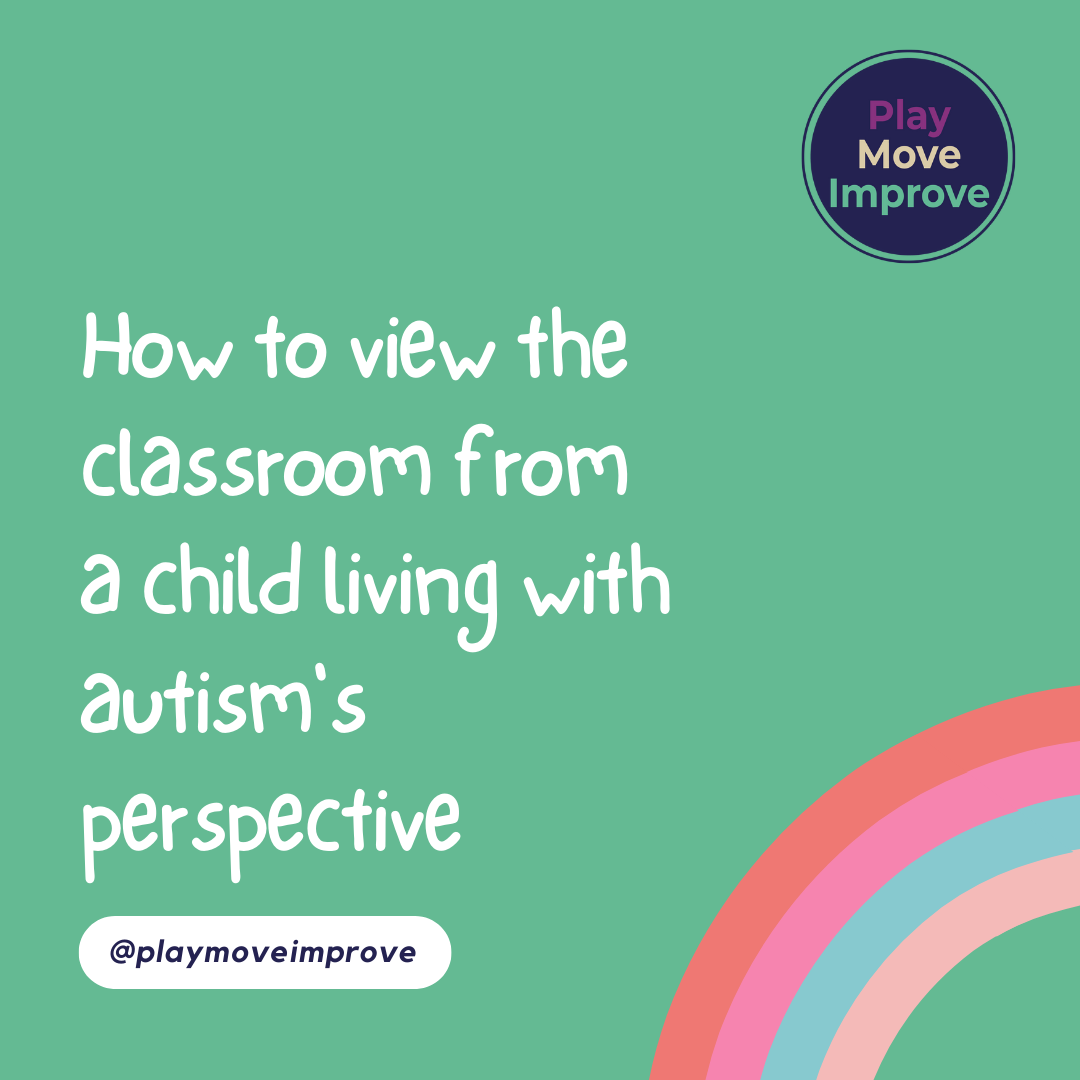
How to view the classroom from a child living with autism's perspective
Share
When I walk into a classroom for an observation session, the first thing that I do is sit at the back of the classroom to observe:
- the environment (shadows, sounds, lighting, environment inside and outside, smells, colours, etc),
- the space that children are sitting in (are they sitting on the floor as a large group, sitting at small group tables, sitting at a busy snack table, etc.)
- observe what sensations are being experienced by the child living with autism from the floor surface, to what is hanging from the ceiling.

My observations of the classroom and the outdoor environment come with no judgement about how you have set up your play spaces, or how you structure your programs.
I am only observing and checking in on the sensations of the environment, with the intention being to help you cater best to the sensory, developmental and social needs of the children.
I look at the sensations in the classroom that my brain is able to filter out, but some children living with autism can't filter out all of these sensations (hanging posters, bright lights, dark shadows, trees moving in the distance, birds tweeting outside, heater vent blowing near the snack table, etc.)
Instead of having a functioning RAS system of their brain that filters out the sensations of the classroom, some children living with autism get distracted by the minor details and sensations and experience the sensations of the environment more intensely than their neurotypical peers.
My role is to help put the puzzle pieces together. To help work out what sensations in the environment may be:
- increasing their anxiety
- distracting them from focusing on their teacher
- overwhelming their sensory filter (the RAS)
- making it difficult to complete transitions
- decreasing their desire to eat, go to the toilet, etc.
What I see a lot in early childhood and primary school classroom settings is lots of shelving in the classroom, particularly lots of shelving units near where the teacher is sitting during mat time. I understand that the teacher has to be able to easily access their resources when sitting in their teacher's chair, but be mindful of the shadows and colourful images that those shelving units are producing for our brain to continuously filter out.
For people with a RAS sensory filter system that functions appropriately, the shadows and colourful objects on the shelving unit doesn't distract our focus from engaging with our teacher. However, for some children living with autism their brain attends to every single detail. That's why some children living with autism are so amazing at remembering information, picking up small errors, reminding us about daily routine details that we have forgotten.
These skills are what I call 'quality control' because if there's one thing out of line in the environment, a child living with autism is often all over it, and they know exactly where that error is.
When we look at shadows and hanging objects in our environment, we want to make sure that wherever we're trying to get the student to look (usually towards the teacher during group time, or their lunch box during snack time) we need to make that environment as exciting and as stimulating as the shadows, colourful objects on the shelf.
We can do this by:
-
Limiting visual clutter and hanging art work near the mat time area
-
Wearing a colourful scarf for mat time activities (so my body is more visually interesting to look towards)
-
Placing colourful place mats on the table only for snack and lunch time
-
Avoid placing your chair in front of a window that looks outside where trees are moving, cars are driving, etc.
-
Offering children with autism to sit in on a rug or quiet table for snack and lunch time as the social/sensory environment of a whole class snack and lunch time may be overwhelming
-
Utilising visual schedules and visual cards and limiting verbal language
-
Providing areas for children to retreat and move away from the busy classroom environment
Be mindful that children living with autism are often visual thinkers (their visual skills can sometimes be exceptional), so their visual brain is picking up on every bit of visual information around them.
- Utilise their visual skills by providing visual routines for your daily activities, transitions, and classroom management strategies.
- Provide visual activities such as pin wheels, marble runs, pop up books, to provide visual sensory input.
Also look at how we can modify the classroom and outdoor environment to manage children's fluctuating anxiety levels, particularly during transitions.
For example, to help a child living with autism to go and wash their hands, and move independently from point A (the group mat) to point B (the bathroom), there may be many visual distractions along the way.
- Is there a cluttered path (chairs, tables, shelves) that they need to get through from point A to point B?
- Is there an obvious, clear path from them to follow (masking tape track, foot prints to follow)?
- Is there a buildup of children (traffic/bottle neck of children) where they need to get to the bathroom?
For more classroom strategy ideas and visual autism support resources check out my special needs package by clicking the image below.

